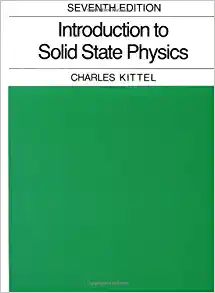Question
1. What are control rods in a nuclear reactor? they serve to fuel the nuclear reaction they are used for emergency notification they absorb energy
1.
What are control rods in a nuclear reactor?
they serve to fuel the nuclear reaction | |
they are used for emergency notification | |
they absorb energy from the reaction to transmit | |
they control the intensity of the chain reaction |
2.
Who was the first scientist to include electrons in the atomic model?
Rutherford | |
Dalton | |
Thomson | |
Bohr |
3.
What are the pros and cons of nuclear fission?
4.
The energy levels for a Bohr atom are shown below.
What amount of energy is needed for an electron to jump from n = 1 to n = 3? (h = 6.626 x 10-34, 1 eV = 1.6 x 10-19 J)
12.8 eV | |
12.1 eV | |
10.2 eV | |
13.1 eV |
5.
Which scientist defined the areas of probability of where electrons can be found orbiting the nucleus of an atom?
Rutherford | |
Shrdinger | |
Thomson | |
Bohr |
6.
A photon has 1.86 eV of energy. What is the photon's wavelength? (h = 6.626 x 10-34, 1 eV = 1.6 x 10-19 J)
345 nm | |
665 nm | |
428 nm | |
218 nm |
7.
This scientist theorized that electrons could only orbit at specific distances and that atomic model included shells of specific energies.
Bohr | |
Thomson | |
Rutherford | |
Dalton |
8.
Which of the following was Einstein's Second Postulate to the Special Theory of Relativity?
Waves had to have some medium to travel through. | |
The laws of physics are the same in all frames of reference that are moving uniformly. | |
The speed of light is constant and is independent of the motion of the source or the observer. | |
A beam of light that traveled parallel to the aether would take longer than the beam that traveled perpendicularly to the aether. |
9.
Which of the following best describes a frame of reference?
the theory that describes the behavior and characteristics of objects moving at relativistic speeds | |
the effect of the slowing of time as an object moves with high speeds | |
a point in which someone relates the behavior of an object from one perspective | |
an experiment that proved that Earth did not have an aether wind |
10.
Beryllium-11 would best be described as:
nuclide | |
protium | |
nucleon | |
isotope |
11.
How many neutrons does beryllium have?
4 | |
9 | |
5 |
12.
Which kind of nuclear reaction is shown in the equation below?
92
235
U
+
0
1
n
56
144
Ba
+
36
89
Kr
+
3
0
1
n
+
200
M
e
V
nuclear fission | |
nuclear fusion |
13.
According to the Michelson and Morley experiments, which of the following is NOT true?
Waves had to have some medium to travel through. | |
The speed of light is constant and is independent of the motion of the source or the observer. | |
A beam of light that travels parallel to the aether would take longer than the beam that travels perpendicularly to the aether. | |
The laws of physics are the same in all frames of reference that are moving uniformly. |
14.
The half-life of Calcium-47 is 3.91 x 105 seconds. A sample contains 4.11 x 1016 nuclei. How much of the sample is left after 7.82 x 105 seconds?
2.06 x 1016 nuclei | |
1.03 x 1016 nuclei | |
2.57 x 1015 nuclei | |
5.14 x 1015 nuclei |
15.
Explain how the atomic model went from the billiard ball model to the plum pudding model?
Step by Step Solution
There are 3 Steps involved in it
Step: 1

Get Instant Access to Expert-Tailored Solutions
See step-by-step solutions with expert insights and AI powered tools for academic success
Step: 2

Step: 3

Ace Your Homework with AI
Get the answers you need in no time with our AI-driven, step-by-step assistance
Get Started


